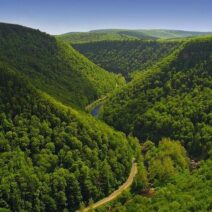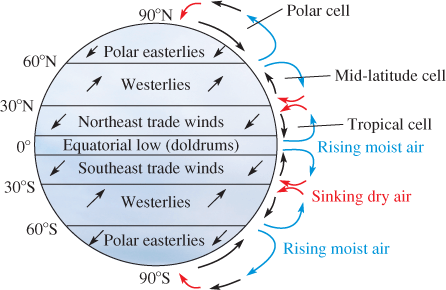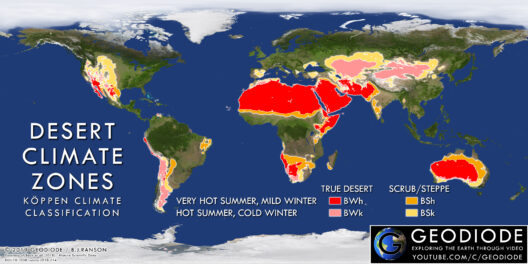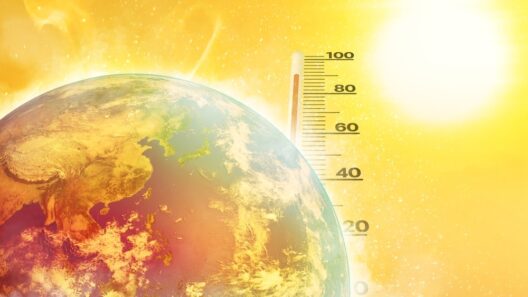Climate change, akin to the relentless hand of a sculptor shaping a block of marble, is carving the atmosphere in ways both subtle and dramatic. The intricate dance of air masses, previously dictated by the immutable laws of geography and thermodynamics, is increasingly influenced by the rising temperatures of our planet. The question begs: does climate change really affect wind patterns? A closer examination reveals that the answer is an emphatic yes.
To fully appreciate the staggering implications of altered wind patterns, one must first understand the underlying mechanics of the atmosphere. The Earth’s atmosphere functions as a vast and complex engine, driven by the differential heating of the globe’s surface. This uneven heating orchestrates air currents that form primary wind belts, such as trade winds, westerlies, and polar easterlies. Imagine these wind patterns as the veins of a living organism, crucial for the circulation of nutrients that sustain life. However, this intricate vascular system is becoming increasingly erratic.
As global temperatures rise—spurred by the unchecked accumulation of greenhouse gases—the very fabric of atmospheric circulation is in flux. Warmer air holds more moisture, intensifying the water cycle and enhancing precipitation patterns. Storms become more severe, mirroring the volatility of an unpredictable tempest. The predictability of our weather, a stalwart characteristic of seasons long past, is being replaced by a jarring uncertainty. The fundamental shifts are not merely inconvenient; they threaten the delicate balance of ecosystems globally.
The tropics—the anchor point of warm, moist air—have seen significant longitudinal shifts in wind patterns. The Intertropical Convergence Zone (ITCZ), a belt of low pressure near the equator where the northeast and southeast trade winds meet, is migrating poleward. This migration—akin to a tide receding from the shore—ushers in prolonged dry seasons in traditionally wet regions, altering agricultural patterns and leading to food insecurity. The delicate balance of tropical rainforests hangs in the balance, with biodiversity loss lurking in the shadows.
Furthermore, the Arctic is experiencing a metamorphosis of its own. As polar ice diminishes, the once-stable polar vortex—a swirling mass of cold air—becomes destabilized. Instances of weaker polar vortices have resulted in cold Arctic air spilling into mid-latitudes, where populations unaccustomed to such phenomena face a rude awakening. The southward excursions of frigid air masses exemplify the chaotic new normal, as cities experience winter storms that defy historical averages.
Wind patterns also influence ocean currents, and together they dictate climates across continents. The El Niño Southern Oscillation (ENSO), characterized by fluctuations in temperature and precipitation, is now exhibiting signs of heightened variability due to the warming climate. A robust El Niño event might coincide with heightened wind activity in the Pacific, altering fishing patterns and causing economic distress for coastal communities. As wind patterns shift, so too do the livelihoods of those who depend upon predictable natural cycles.
This alteration of airflow is further exacerbated by the phenomenon known as “jet stream shift.” The jet stream, a fast-flowing ribbon of air at the edges of the polar and mid-latitude climates, is currently exhibiting increased waviness, allowing extreme weather events to persist longer than they would in a stable system. This persisting instability serves as a harbinger of disruptions, from droughts to flooding, leaving in its wake communities struggling to adapt.
Critically, the ramifications of these shifts transcend environmental concerns and burrow deep into the socio-economic fabric of societies globally. Nations already bearing the brunt of climate change’s wrath—poorer countries with less adaptive capacity—will find themselves ensnared in a relentless cycle of catastrophe. The altered wind patterns shape not only the physical climate but also the socio-political landscape, as migration due to climate-induced disasters becomes a pressing reality.
As stewards of the planet, it is imperative to understand that the winds of change are not merely a phenomenon to observe from the sidelines—they are a clarion call to action. Mitigating climate change through reducing emissions and advocating for sustainable practices can help slow the relentless pace of atmospheric transformation. Addressing the root causes will allow us to shape a future where ecosystems can adapt more robustly to the changes underway.
The interplay of climate change and wind patterns is an intricate tapestry woven by the threads of human activity and natural processes. As this tapestry shifts, unraveling in some areas while tightening in others, a collective response from humanity is paramount. The air we breathe, the weather we experience, and the future we anticipate are inextricably linked to how we choose to respond to this urgent reality.
In conclusion, the notion that climate change does not affect wind patterns is akin to denying the reality of gravity while standing at the edge of a precipice. The changes are here, palpable and pervasive, necessitating a reevaluation of our prior understanding. The winds of fate may have shifted, but by harnessing knowledge and encouraging collective action, we still hold the power to redirect their course for generations to come.








